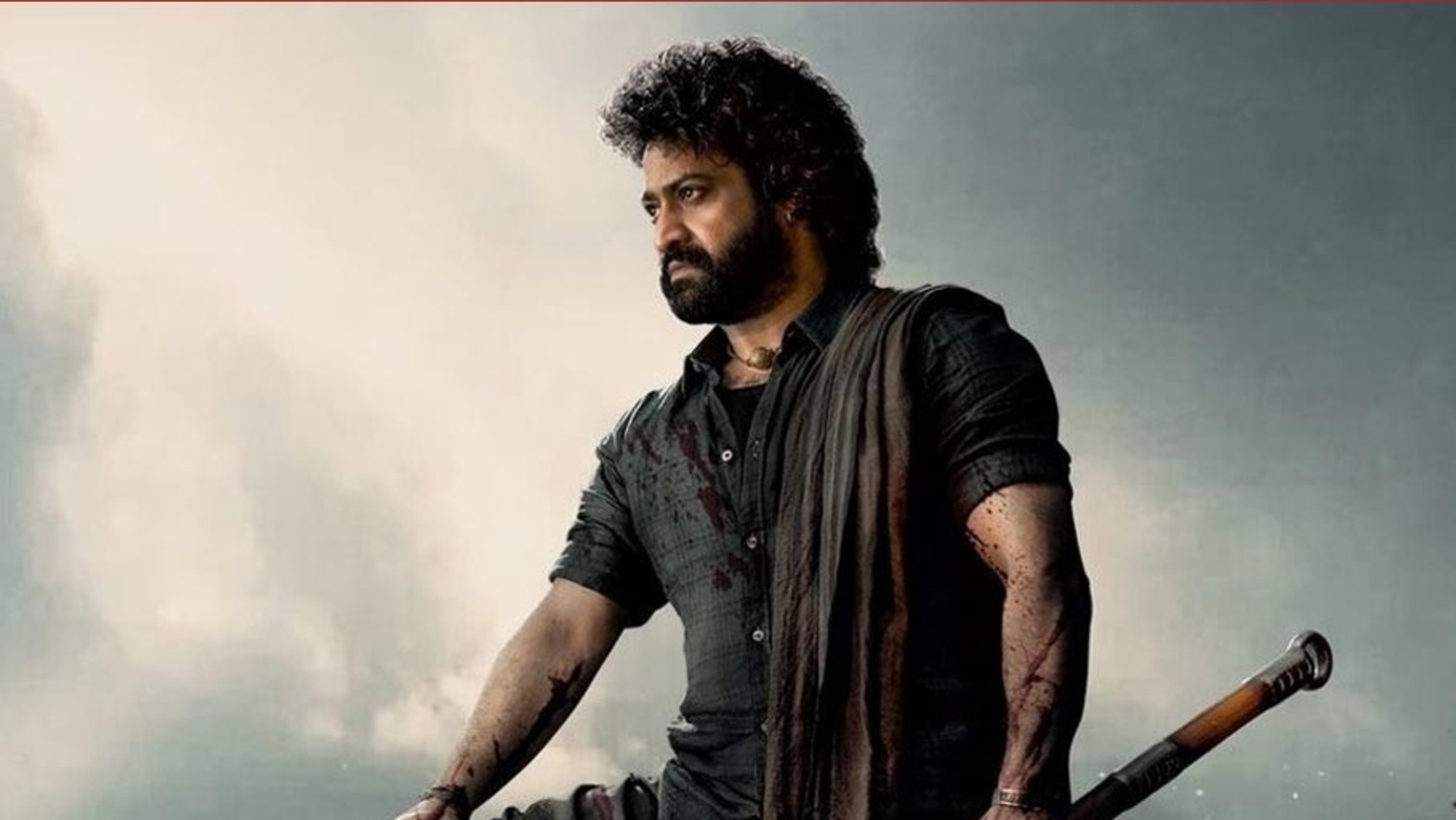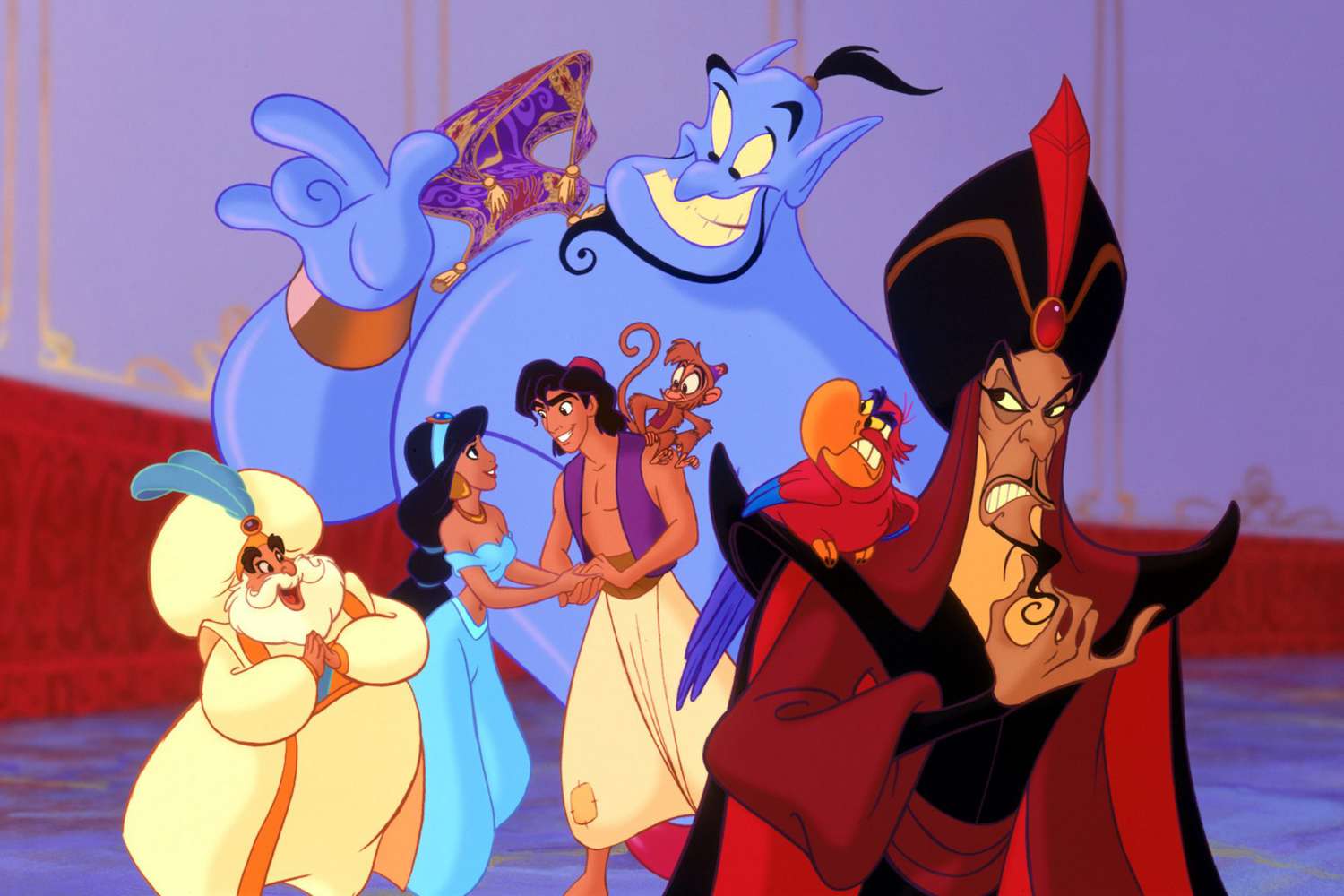Multi-award-winning actress, singer and dancer, Rita Moreno, blazed an iconic trail as the first mainstream Hispanic actress to grace Hollywood when she exploded onto the big screen as Anita in 1961’s classic film, West Side Story.
The role earned her an Oscar for Best Supporting Actress in a Motion Picture, crowning her the first Hispanic performer to ever win an Academy Award. But even after taking home Hollywood’s top prize, Moreno’s career started and stalled repeatedly throughout the 1960s as she fought to be cast in roles that didn’t box her in to antiquated stereotypes.
Though film roles for a leading lady of color were far and few between at the time, Rita Moreno turned her attention to television and music, taking home a Grammy Award in 1973 for Best Children’s Album during her stint on the popular children’s television program and, The Electric Company. Then came a Tony Award in 1975 for her work in the Broadway production of, The Ritz. Soon, two prime-time Emmy’s followed in 1977 and 1978. Moreno was hard at work establishing herself as a bonified triple threat. She cemented an indelible legacy as one of the world’s most versatile and talented performers.

One Day at a Time sills, Courtesy of Netflix
Throughout the ensuing decades, Moreno continued to take on roles on her own terms, proving her staying power for six decades. In the late 1990s and early 2000s, she played Sister Peter Marie Reimondo in HBO’s first original and groundbreaking dramatic series, OZ.

One Day at a Time sills, Courtesy of Netflix
Moreno currently stars as Abuelita Lydia Riera, the hilarious and spicy grandmother on the new incarnation of Norman Lear’s television creation, One Day at a Time, now streaming its third season on Netflix. The show’s official premise is, “Two Cultures, One Familia.” It’s an updated twist on the 1975 hit series starring Bonnie Franklin, Mackenzie Phillips, Valerie Bertinelli and Pat Harrington, but with a twist. The reboot centers around a Hispanic American family, no doubt Lear’s way of thumbing his nose at some of the more racist rhetoric flung through 2016’s presidential campaign.

One Day at a Time sills, Courtesy of Netflix
In 2014, Actor Morgan Freeman presented Moreno with the Screen Actor’s Guild Lifetime Achievement Award, calling her “a world class actress, singer and dancer,” and just as significantly, “a fighter, who battled to break free of racial and sexual barriers that plagued Hollywood’s golden age.” Before there was Rosie Perez, Salma Hyek or Jennifer Lopez, there was the inimitable Rita Moreno.

One Day at a Time sills, Courtesy of Netflix
Recently, Moreno got the call from Steven Spielberg, for a forthcoming remake of the film that made her an icon, West Side Story. Moreno will play a role in the film as well as Executive Produce. I recently sat down with Rita Moreno to discuss her one-of-a-kind career and journey.
TME: When you won your Best Supporting Actress Oscar in 1962 for the film, West Side Story, you thought you would then transcend racial stereotypes with the parts you would be offered.
Rita Moreno: And I was very disappointed (laughs). Not only disappointed, but it really, really broke my heart.
TME: I feel you. I’ve experienced it as a journalist, not in terms of ethnic discrimination, but the bewilderment of hitting a peak and then stalling. Your famous quote about this phase of your career was, “I showed them. I didn’t work for seven years.”
RM: When I say, “I showed them,” of course, I’m being facetious.
TME: Of course. And in this business, it’s very hard to turn down work. Writers write, Actors act, etc. It’s what you do, and you crave it.
RM: Not only crave it. It pays the rent.
TME: Yeah, and then there’s that! (Laughs) Any regrets about taking that stance?
RM: I think it was a very good decision on my part, because the only thing that was being offered, really, were gang movies, and they certainly weren’t as interesting as West Side Story. I think it would have depressed the heck out of me to go back to that stuff. It paid off in the sense that I had peace of mind and I didn’t feel like I was being insulted.
TME: Let’s talk about the amazing Norman Lear and the One Day at a Time reboot on Netflix you’re starring in.
RM: Isn’t he something?!
TME: I think he is a genius!
RM: He is a genius, you’re right. He’s still going strong. He’s going to be 96, and he can speak and he can walk (laughs). He’s a remarkable man, and a lovely, lovely person.
TME: All in the Family is my favorite sitcom of all time.
RM: Oh, it’s one of my favorite shows too!
TME: The way he has tackled race, gender, religion, sexuality… on and on, has helped to re-shape our society. The original One Day at a Time with Bonnie Franklin, Mackenzie Phillips, Valerie Bertinelli and Pat Harrington that premiered in 1975 was very progressive in that single motherhood was much more taboo at that time. With this updated version, there’s an extra layer to the story in that the family are Hispanic Americans. After all you went through in terms of fighting for roles that accurately represent Hispanic people, do you feel a sense of vindication at portraying a positive representation of a Hispanic family on television?
RM: Vindication implies that I’m still angry. No, I don’t feel any sense of vindication. I’m just so happy and so proud that Hispanics have more representation. I think we’re still not there. I think we are underrepresented. But feeling vindictive is a waste of time, don’t you think?
TME: Wrong choice of words. Perhaps a better way to put it would be, “a sense of wholeness.” I was watching an episode earlier, and there’s a scene where your character, Lydia, is talking about the racial slurs she had to endure in her generation. When her daughter and granddaughter ask her for specifics, Lydia summons up the courage to say the word “spic” out loud. The context of the scene is that she is dis-empowering that word that was so painful for her. To be able to stand there and say it, and dis-empower the word…
RM: What was so remarkable about that scene is that kids don’t even [fully] understand that word. It’s bizarre. Lydia is carrying on and on about the word “spic,” and everybody in the room is like, “Yeah, so?” It was a terrible word in my time. I love that!
TME: I have to give so much credit to the show’s creator, Norman Lear. The courage to look something in the eye and stare it down, man, and incorporate comedy into it is amazing.
RM: That’s a wonderful way to put it, yes. You’re right.
Allison Kugel: What do you hope viewers of the updated ODAAT will learn about Hispanic American families?
RM: It’s what I think they are learning, because we have now gained an American audience as well. We always, of course, had the Hispanic community watching the show. People who are not Hispanic are learning that family is family, is family. It’s universal. That’s what Norman was hoping for. You want the universality of the situation to work on people, and that’s what has happened. The moment of, “Oh My God. We’re like that too!” Just add in some spice and some deliciousness, which is the Hispanic nature of the show.
TME: If you live in a smaller town in the United States, where you are only surrounded by people who are just like you, it’s so easy to dismiss other types of people, because you don’t have to get to know them. Once you get to know people who are different from you and you see their humanity, it becomes much harder to be dismissive.
RM: Yeah. And I find that a lot of people who watch our show just love Lydia. She’s so outrageous and so big. Children love Lydia. Go figure!
TME: Because your character is that bridge between what was and what is. You’re teetering on the edge between the old school stuff that you came of age with, while trying to embrace the world we’re living in now.
RM: She’s familiar with what she calls “JouTube.” (Moreno puts on a Cuban accent) and “SnapChap.” (Laughs) But she’s familiar with it, which is terrific. It’s because we have a room full of young writers who are all into that kind of stuff. For the new season, there’s an episode that guest stars Gloria Estefan. It’s hilarious. She plays my sister, and all I can tell you is we hate each other. The whole episode is centered around a funeral of an aunt, and Gloria’s character comes to town to attend the funeral. Gloria is absolutely, deliciously funny! And of course, we’re both over the top as we’re trying to do air kisses that are about three feet apart.
TME: When you hear other Hispanic performers speak, and I know I have heard this from Jennifer Lopez, they always refer to you as the gold standard of excellence and inspiration. You were the performer who made them believe that this career was achievable for them. Have you had a chance to speak to any of the younger Latino actors and singers about your influence on them?
RM: I’ve heard it from Jennifer, and I’ve heard it from Rosie Perez, and also from Andy Garcia.
TME: As someone who emigrated to the states from Puerto Rico as a young girl and who wanted to be a performer, who did you look to as a blueprint?
RM: Well, you know what? No, there were no role models when I was young and in the movies in my late teens. There was nobody. So, I chose one for myself. I chose Elizabeth Taylor because she was close to my age and she was brunette (laughs); and she was beautiful and gorgeous. I made her my role model. But, you know, there was just nobody that looked like me in a public [space]. The Hispanic community very often calls me La Pionera, the Pioneer.
TME: How do you define yourself as a human being?
RM: I’m a family person before anything else. I have a daughter, Fernanda Louisa, that I’m insane about. And I have two grandsons, and that is where I live. They are in my heart all the time. I adore them, and I don’t have much family; I never did because I left Puerto Rico with my mom on a ship, and that was the end of family. I never saw them again. I had a brother that I never saw. His name was Francisco.
TME: And there was no contact after you left Puerto Rico? That was it?
RM: No, and I attribute that to my mom. For whatever reasons, she just stayed away. I don’t know how to explain it, because I don’t understand it. By the time I did try to find him, I couldn’t find him. About a month or two after my book came out (Rita Moreno: A Memoir/Celebra Books), I heard that he died. I have a half-brother, Sam Alverio, because that’s my true [last] name. I’m Rosa Dolores Alverío (she speaks her full birth name, punctuated with the pride of a strong Puerto Rican accent). I speak to him on the phone now and then. That’s about it. Like many Hispanic people, I’m sure I have tons and tons of distant cousins.
TME: How do you find peace in your heart regarding the brother who passed away?
RM: I just have to tell myself that it’s not my fault. My mom, for whatever reason, she always had difficulties with men. I had four stepfathers. It doesn’t make me happy, but that’s the reality of the situation.
TME: Let’s talk about the upcoming remake of the film West Side Story. That’s a hell of a segue!
RM: Isn’t that astonishing though? Talk about coming full circle.
TME: How did you become involved as Executive Producer?
RM: [Steven Spielberg] always wanted to do the film, and he was a good friend of Robert Wise, who co-directed the original film with Jerome Robbins. When the original West Side Story film came out [in 1961] Steven was crazy about it, and that’s when he got very close to Robert Wise. He said he just hounded him about how the film was shot. It’s something he always wanted to re-do. The interesting thing is that he’s not updating it. It will still take place in 1957. It’s Romeo and Juliet. What’s wonderful about the young girl that he chose for the remake (17-year-old newcomer, Rachel Zegler) is a young girl.
Natalie Wood was a woman. I was a woman, playing Anita. I was really, way too old for that role. But that’s how it happened, then. Tony Kushner is doing the script. He wrote Angels in America. They both thought that the original part of Doc (the candy store owner in the 1961 film played by Ned Glass) was not fully realized, which I think is true. They both agreed that they weren’t terribly interested in that role for the remake. One, or both of them said, “What about Rita Moreno as Doc’s wife?” So, the storyline in the new film will be that Doc passed away, and now it’s Valentina who runs the candy store. They offered the Executive Producer credit to me, because Steven feels that I am the bridge to this movie.
TME: You’re offering all this first-person insight into what went on during the filming of the original movie.
RM: Exactly. He’s asked me a lot of questions, and he will probably ask even more. We talk about the shots all the time, because, you know, the director of the original film, Bob Wise, was really an editor. He was a great, great editor. He did Citizen Kane with Orson Welles.
TME: With the original West Side Story, Natalie Wood who played Maria, was not Hispanic. She also didn’t sing. She lip synced the songs (Marni Nixon voiced Natalie Wood’s songs in the original West Side Story). This isn’t a knock at Natalie Wood, who did a great job in the role, but with the times we’re living in now, people would now be hyper-sensitive to something like that. Is the young actress who will play Maria in the remake, of Puerto Rican descent?
RM: She’s Hispanic and that’s what counts. I think she’s Columbian. Here’s the thing; she’s Hispanic, she sings and she’s seventeen. With Romeo and Juliet, that’s how old Juliet was supposed to be. She’s very young. Steven Spielberg and Tony Kushner have been absolutely crazy when it comes to finding Hispanic people to play the Hispanic roles. They even called the University of Puerto Rico and made an appointment for a panel meeting with an audience who were allowed to ask questions about the movie, and [express] how they felt about it. So, they really, really killed themselves with respect to that. But I did tell Steven, I said, “You know there are always people with agendas. There will always be somebody who’s not happy with it because of… whatever. So, get used to that. It’s going to happen.”
TME: You can’t make everybody happy. I remember when Jennifer Lopez played Selena Quintanilla in the biopic, Selena, and people were in an uproar because Jennifer’s not Mexican like Selena was.
RM: That just makes me furious. Let’s put it this way, if I’m playing a Jewish person in a movie, is it going to matter if I am a Sephardic Jew or a Russian Jew? It’s outrageous. You can’t always find the one you want because we’re now talking about someone who can sing and who knows music who can dance, come on!
TME: I’m sure you’ve heard the acronym, EGOT – for Emmy, Grammy, Oscar and Tony winner. You are one.
RM: Mine has one extra letter. I’m a KEGOT. The “K” is for a Kennedy Center Honors award. How do you like that?
TME: Where are all these awards displayed throughout your home?
RM: They’re on several shelves, because I have a bunch of them. And, Oh My God, this year I’m getting so many. I have a feeling that they’re all saying to each other, “Quick, let’s honor her before she kicks the bucket!” Now it’s getting ridiculous, and I’ve actually turned some of them down.
TME: You could get a really big, ostentatious wall unit curio and make it the awards curio.
(Rita bursts out laughing at this idea)
RM: There is a thing called overexposure. I’m really trying to cool it a little bit.
TME: How do you process all of that? It’s hard enough to break through as a performer, but you’ve won every coveted award there is. Do you process it through your ego? Do you process it through your heart? Do you see it from a higher perspective?
RM: When I pass by all of these awards in the living room, and my living room is two steps down from the rest of the house, so I don’t go in there often… but when I’m in the living room and I look at these shelves, I sometimes stop and look at them and say, “My God. What an extraordinary journey this has been.” This little Puerto Rican girl; born in Puerto Rico, brought up in the United States… how astonishing is that? It’s fabulous and I cannot be casual about it. I’m not. I’m absolutely stunned.
TME: You feel a sense of awe. It’s not, “Look at me.” It’s, “Look at this amazing journey.”
RM: Oh. hell no! I feel a sense of awe. How did this happen?! I say that to myself, “How on earth did this happen? Wow!” I wish so much that my mom was alive to see this. Oh God, I miss her so much. She would be so proud. She did live long enough to attend the Oscars with me.
Season three of “One Day at a Time” is now streaming on Netflix. Follow Rita Moreno on Twitter and Instagram @theritamoreno.

Movie
Upcoming NTR Junior projects

Nandamuri Taraka Rama Rao Jr., affectionately known as Jr NTR, has consistently enthralled audiences with his dynamic performances and versatile acting prowess. Following the successful release of “Devara: Part 1” on September 27, 2024, fans are eagerly anticipating his forthcoming projects. Here’s an overview of what’s next for this action superstar.

1. Devara: Part 2
After the resounding success of “Devara: Part 1,” which grossed over ₹466 crore globally, the sequel is highly anticipated. Director Koratala Siva has hinted that “Devara: Part 2” will be even more intense, stating that if Part 1 showcased 10% of Jr NTR’s capabilities, Part 2 will unveil the remaining 90%. Filming is slated to commence in the first half of 2026, with a targeted release by the end of that year.

2. War 2
Expanding his horizons, Jr NTR is set to make his Hindi film debut with “War 2,” directed by Ayan Mukerji. This sequel to the 2019 blockbuster “War” will see him sharing screen space with Hrithik Roshan and Kiara Advani. The film is part of the YRF Spy Universe and is scheduled for release on August 14, 2025, coinciding with the Indian Independence Day weekend.

3. NTR 31 (Tentative Title: Dragon)
In collaboration with acclaimed director Prashanth Neel, Jr NTR will star in a period drama tentatively titled “Dragon.” The film is set to delve into themes of immigration and is expected to be one of the most expensive projects for both the actor and the director. The movie is slated for a grand release on January 9, 2026.

Why Jr NTR is the Action Hero Everyone Wants to See
Jr NTR’s appeal as an action hero stems from his ability to seamlessly blend intense physicality with deep emotional resonance. His performances are characterized by a compelling screen presence, dynamic energy, and a remarkable ability to connect with audiences across diverse roles. This unique combination of skills has solidified his status as a leading figure in Indian cinema, making him the action hero everyone wants to see.
With a lineup of diverse and high-profile projects, Jr NTR continues to push cinematic boundaries and captivate audiences worldwide. His dedication to his craft and ability to reinvent himself with each role ensure that fans have much to look forward to in the coming years.
Movie
“Death of a Unicorn: A24’s Twisted Fairytale You Won’t Forget”

Headed to a wilderness retreat of a wealthy pharmaceutical CEO to hopefully land a lucrative job, widower Elliot and his reluctant daughter Ridley manage to have a car accident with a heretofore-thought creature out of legend, and hijinks ensue!
Oh this is an absolute gem of a movie y’all, brought to you by the genius minds of film production company A24, a delightful blend of horror and campy, almost idiotic, comedy. Make sure your seatbelt is buckled and let’s dive into this!
So Ridley (Jenna Ortega) is you typical teenager, angsty and missing her passed-on mother, full of acne troubles and secretly vaping while her dad Elliot (Paul Rudd) ignores her for much more than appearance purposes, while he schmoozes his way into the good graces of the family they’re going to stay with. Elliot ignores everything but his continued greed, for both money and continuous stability for him and Ridley, really, he swears, so when the misty mountains cause their electronics to go haywire and Elliot’s busy with that crisis, he doesn’t notice until it’s too late and BAM. You’ve hit an actual unicorn with your car.
Like most girls, Ridley can’t help but be fascinated by the poor mythical horse-like creature, and of course she reaches out to grasp the glowing horn, filling her head full of magic and her eyes full of stars and the cosmos, while Elliot has a much more, let’s say visceral, reaction. But rather than calling, I dunno, some sort of wildlife preserve or the cops or even considering burying the unfortunate horned horse, no, the baby is loaded like a downed stag into the back of Elliott’s car and they hurry on to the CEO’s wilderness retreat.
It makes sense that the changes to Ridley’s appearance are the first thing that allows O’Dell (Richard E. Grant) and his greedy, grasping family to understand that the body of the unicorn has healing properties. Wife Belinda (Tea Leoni) is your typical utterly vapid socialite who helps the poor downtrodden of whatever’s currently popular third world country, not for the do-gooder part of it, but for the optics. And their son Shepard (Will Poulter) is a walking poster boy for the arrogant frat boy type who could never settle on just one thing to be or do, and so he tries them all – archery, photography, mixology, music and various forms of pharmaceuticals, all while sporting these terrible fashion choices in shorts and rambling proudly about his nonexistent accomplishments. Griff (Anthony Carrigan) is the family butler and general verbal punching bag, and let us not forget the unfortunate pair of doctoral research scientists who get called in to examine the unicorn, Dr. Song (Steve Park) and Dr. Bhatia (Sunita Mani).
So we have a family of covetous types who all want to divy the unicorn up and sell its various parts for as much wealth and power as they can get, plus the pair of scientists who are flabbergasted to find themselves dissecting an actual unicorn that, hey, guess what, isn’t actually dead for really-real yet. Elliott’s trying to procure his and Ridley’s slice of the action, though honestly, his lawyerly powers of persuasion seem to be rather lacking in this regard, while Ridley is off doing some actual research on medieval unicorns and what the ancient legends in tapestries had to say about them. You know how the modern genie, with his Arabian lamp and his three wishes with their horrifically ironic consequences, actually stems from the ancient legend of that old monster, the creature born from fire that wants nothing more than to destroy all human life on Earth, the Djinn? Our modern legends and beliefs about unicorns is kinda like that.
So everyone, even our scientists with their experiments and O’Dell supposedly being an experienced animal hunter, seems to have forgotten that a horse is a mammal and therefore, has parents. And while everyone is concerning themselves with what to use the babies’ various parts for, only Ridley seems to have realized, that the babies’ sire and dam are coming for it!
We all know horses are smart, and that humans and horses can form an almost mythical bond, but when a stallion or even a dam’s ire is raised, they can attack and defend just as well as any rampaging beast, and do present a very real and dire threat. And these particular horses, with their shaggy midnight-black coats and hooves the size of monster-truck hubcaps, their fangs and absolute righteous rage at their baby being stolen, not to mention both mom and dad’s inherently magical nature, and those utterly badass war-unicorn horns, are here to wreak utter destruction and death upon the humans that would dare to eat, drink and snort, their baby!
Full of utterly ridiculous fun with human greed and the scarcely-remembered wonder of those magical creatures you heard about as a child, cheer along with the Jurassic Park-like screech of our rampaging parents to save their baby, in Death of a Unicorn, in theaters now!




